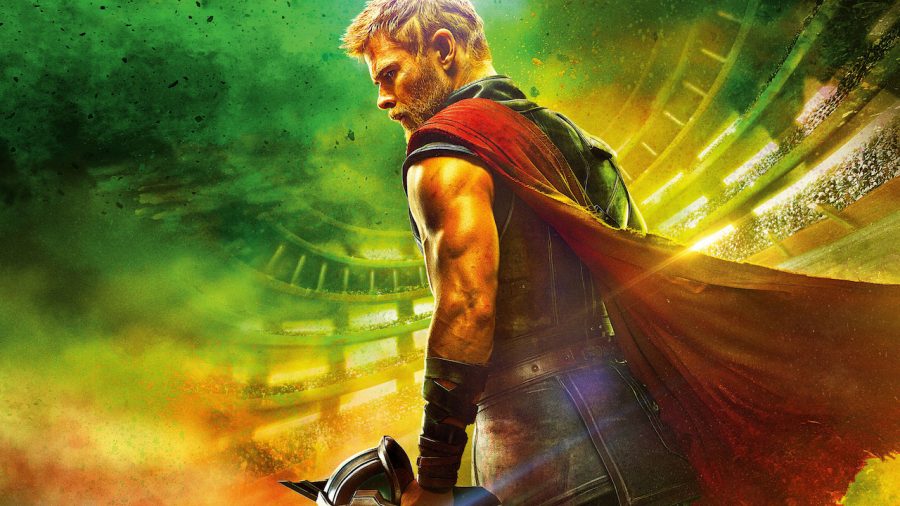Now Showing: Thor: Ragnarok
November 6, 2017
It turns out that Thor’s greatest strength isn’t his hammer, it’s his humor. After some failed attempts in previous films, Thor has found a fitting and likable personality to take into the stars in “Thor: Ragnarok.”
In his latest adventure, Thor must defeat his sister, Hela (Cate Blanchett), who has escaped imprisonment and will do anything to claim her throne. He is thrown out into a foreign world during a confrontation with Hela and sets out to assemble a force to return home and bring her down.
Director Taika Waititi made a seemingly hitch-free transition from his indie films, such as “What We Do in the Shadows,” to the big screen, breathing fresh life into a character beaten down by other Marvel films. A few minutes in, you can already feel the rage of die-hard comic-con geeks start to build as the supposedly stoic and serious warrior Thor (Chris Hemsworth) casually jests and speaks sarcastically to a powerful hellish king threatening destruction of Thor’s homeland, Asgard.
While many Marvel movies feature dramatic fight scenes and serious struggles set to orchestral and bombastic music, Thor breaks the mold a few minutes in when he fights off a demon army with rock band Led Zeppelin blasting in the background. The movie also fails to take itself very seriously at times, which may be a nuisance to aforementioned comic-con fans but is entertaining and amusing to a general audience.
Hela, the antagonist, instantly establishes herself as powerful and remorseless. Upon meeting the gods Thor and Loki (Tom Hiddleston), she simply commands them to kneel before her. She wishes to bring total power and prestige to Asgard using any means necessary.
The film suffers from a cookie cutter plot, as many Marvel movies tend to do. It can be summed up in a few phrases: villain gains power, hero goes against the odds, villain is defeated. Luckily, Waititi is able to, for the most part, sweep this under the rug and sprinkle bits of humor and charm throughout the film.
What could have easily been dull expository moments instead were laughter generators that advanced the plot as an added bonus. Not to say that the movie is a comedy—it’s far from it, considering the number of CGI fighting scenes— but the mood is consistently lightened, unlike director Kenneth Branagh’s 2011 interpretation of the God of Thunder.
Marvel’s trademark use of CGI unfortunately comes through to spoil a large portion of “Ragnarok.” It feels like every other scene is a flurry of swords and bodies, and you almost feel relieved when characters are simply talking instead of chopping each other’s heads off. The most climactic fight scenes also featured deus ex machina moments of Thor’s godly powers getting him out of sticky situations. This monotony is only broken up by the sci-fi portions of the film featuring portals, lasers and spaceships, with the same charm reminiscent of “Guardians of the Galaxy.”
Mid-way through the film, Thor is transported to a planet made up of half garbage and half outcasts with a Grandmaster (Jeff Goldblum) running his own personal gladiator arena. The creativity and personality packed into this environment is better experienced with no further explanation.
All of the characters are immediately established in their first scenes. Within thirty seconds of being introduced to a new character, you already get a sense of who they are. All of their future actions and dialogue are then seen as characteristic of them, enhancing the connection to the cast and storyline.
“Thor: Ragnarok” sets a precedent for future Marvel films and interrupts a monotony only breakable by creative and deliberate direction. Although not without its flaws, the movie should serve as an example and inspiration to future Marvel writers and directors to look at superhero movies from a new perspective.




